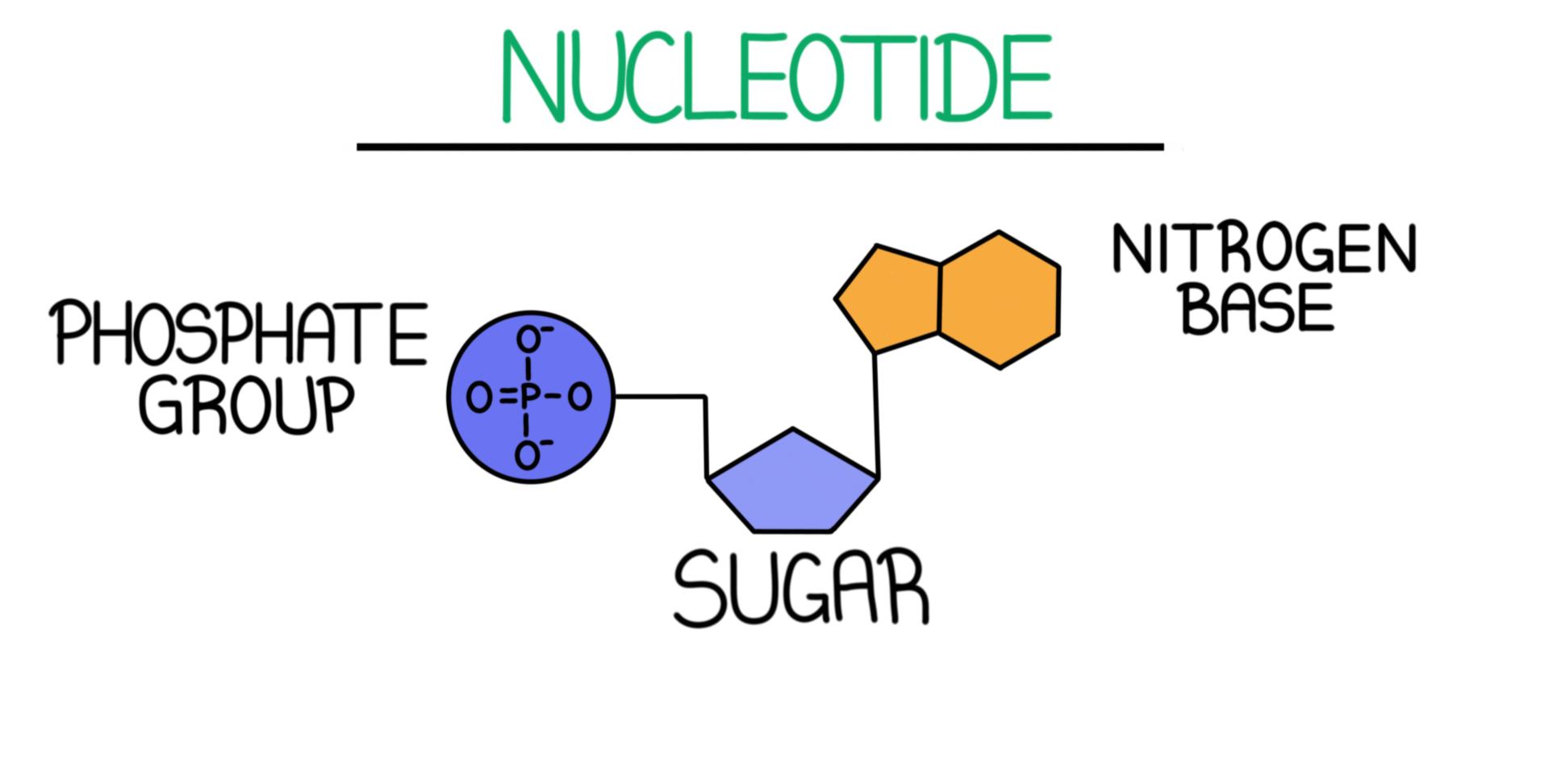What are the four macromolecules?
Carbohydrates, Proteins, Lipids, & Nucleic Acids
______________ describes what happens and _______________ describes why something happens
Law describes what happens and theory describes why something happens
Which process is done inside the mitochondria?
Cellular Respiration (making energy)
O2 + Glucose --> CO2 + H2O + ATP
Done in plants and animals!
Which organelle is used in making proteins?
Ribosome
Found in all cells
What is the main difference between passive and active transport?
Active requires energy (ATP) and passive is no energy
What are the three components of a nucleotide?
Phosphate group
Pentose sugar (ribose or deoxyribose)
Nitrogenous base (A, T, G, C)

What does a theory need to be widely supported amongst most scientisits?
Scientific theories are the culmination of many scientific investigations drawing together all current evidence
Which process is done in chloroplasts?
Photosynthesis
CO2 + H2O + Sunlight ---> O2 + Glucose
This organelle is only found in eukaryotic cells and its function is to house the genetic material of the cell.
Nucleus
Briefly define endocytosis and exocytosis.
Both are bulk transport - moving large molecules (active transport)
Endocytosis - taking in
Exocytosis - moving out
Give one example of each macromolecule.
Carbohydrate: glucose, cellulose, lactose, glycogen, starch, fructose
Protein: hemoglobin, lactase, insulin, keratin, myoglobin
Lipids: Wax, oil, fats, phospholipids, steroid hormones, triglycerides
Nucleic acids: DNA & RNA
Which microscope type would be best fit to look at a living sample collected from pond water?
Compound light microscope
Describe how the cell theory got developed.
Many different scientists worked together using their observations and evidence to create what we know today as the cell theory
What are the 2 main differences between prokaryotic and eukaryotic cells?
Eukaryotic cells are larger and more complex because they have a nucleus and membrane bound organelles
Prokaryotic cells are smaller and simpler
What is the cell membrane made of?
Phospholipid bilayer and protein channels
What are the monomers for each macromolecule?
Carbohydrate: monosaccharide (one sugar unit)
Protein: amino acids
Lipid: glycerol & fatty acids
Nucleic acids: nucleotide
Which microscope would be used to view a whole specimen, such as a barnacle?
Dissection Microscope
What are the 3 major differences between plant and animal cells?
Plants have chloroplasts, cell walls, and a larger vacuole
Also, plant cells are fixed shape and animal cells have irregular shape
Why is the vacuole larger in plant cells?
To store more and exert pressure onto the cell wall to provide structural support
What are the three types of passive transport?
Simple diffusion, Facilitated diffusion, & Osmosis
Name one function for each of the 4 macromolecules.
Carbohydrates: short term energy (immediate use)
Proteins: transport of materials, storage, aid in movement, enzymes, structural (hair, nails), regulatory
Lipids: long term energy storage, make up cell membranes, chemical messengers (hormones), protect/insulate
Nucleic acids: genetic information
Which microscope type can only be used if the specimen is not living (dead)?
What are the 3 components of the cell theory?
1. All cells come from pre-existing cells
2. All living things are composed of cells (or single cell)
3. Cells are the basic structural unit of all organisms
What are the two components that make up the cytoskeleton?
Microfilaments and microtubules
Ion pumps, Endocytosis, & Exocytosis
